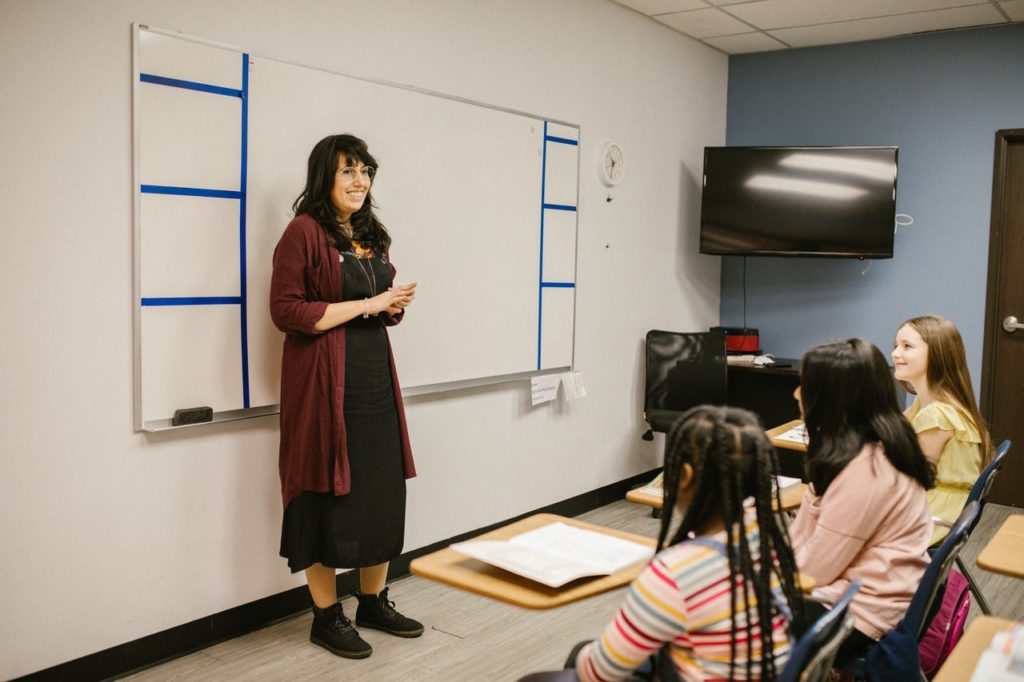Table of Contents
What is Sex Education?
Sexual education, often shortened to just sex ed, is a broad term used to describe classes designed to teach young people about human reproduction, sexual anatomy, and safe sex practices. Sexual education programs seek to reduce teen pregnancy, STI transmission, and give students a clear understanding of human reproduction in an academic context to dispel myths from peer gossip and the internet.
Despite it’s controversial nature, sex education is mandated in many countries around the world including 30 of the 50 US States. Because of this, it is important that schools have a clear understanding of the benefits of including sex ed and what makes a successful sex education curriculum.
This article will discuss the benefits of sex ed programs for students, recent research on best practices in sexual health education, and outline the steps and considerations a school or teacher should have when designing a sex education program.
Benefits of Sex Education in School
The teaching of sex education has many benefits for students. Effective sex ed programs can:
- Reduce teen pregnancy.
- Encourage students to start having sex later in life.
- Reduce the number of sexual partners a person has.
- Increase the use of condoms.
Especially in developing countries where sex education is limited or not included, STI incidence and age at first pregnancy are significantly higher. Age appropriate sexual education can help to fight the spread of sexually transmitted infections, lower the amount of unwanted pregnancies, and lead to a later start to sexual activity.
Qualities of an Effective Sex Education Program
In order to have a formal, clear and effective sexual education program, schools should ensure:
- Sexual ed classes are taught by teachers with sexual education training.
- Include clear and comprehensive information on all types of sexual activities.
- Have time set aside for student questions.
- Be firmly based on a scientific approach that covers the biological and psychological aspects of sexual health.
An effective sexual education program has to be formalized so that students take it seriously, comprehensive enough to include all types of sexual behaviors, and clear enough to not lead to misinterpretation. Often times sex ed classes are vague due to the teacher being uncomfortable with going into too much detail with students leading to a surface level understanding that, when combined with misinformation from the internet, can lead to students being even more interested in what is being kept from them.
This is especially true for sexual minorities such as those who identify as LGBT as many programs focus solely on the biological and reproductive aspects of sexual health. When a sex ed program only focuses on the reproductive aspect of sexual health, students may engage in other sexual practices like anal or oral sex since these can not lead to pregnancy. It is important that students understand the mechanics and risks involved in other types of sexual acts as well.

What Age Should Sex Education Begin?
According to a study conducted by the Institute for Reproductive Health at Georgetown University in Washington D.C., students as young as 10 could benefit from appropriate sexual education programs. (Igras et al.) While it may feel uncomfortable to consider, a study out of the University of Texas found that over 10% of 12 year olds in the US had already engaged in sexual activity.
Unfortunately, however, most sex ed programs are designed for significantly older students and do not introduce information in a manner that is appropriate for such a young age. Schools need to design curricula that discusses sexual health in a way that is appropriate for younger students in order to ensure that young students don’t engage in risky behavior due to their exposure to misinformation on the internet.
Some even advocate simply including age appropriate sexual education from the beginning of schooling in kindergarten. While it may seem unthinkable to discuss sex with children so young, there are still ways to begin discussing gender, sex, body image and health with very young students.
Sexual education for young students could involve understanding stranger danger, personal space, appropriate touch, and types of relationships so that young children can stay safer, recognize dangerous situations, and report when they feel lines have been crossed by adults or other children.
Effective sexual education programs don’t just focus on the mechanics of sex and reproduction but also on healthy relationships of all kinds and how to stay safe and have a healthy mind and body. Sexual education should be included in regular science classes and while it can be beneficial to bring in expertise from a variety of adults, sex ed classes shouldn’t be short stand alone interventions, but mindfully included as units in science and health classes.
These classes should be taught by experts in science and health education and not handled only by untrained counselors, administrators, or coaches. Sex education often is best taught by a team of teachers so that information can come from a diverse background of experience in order to be able to answer students questions effectively and not miss crucial aspects of sexual health.
While bringing in outside experts can be beneficial for specific topics or interventions, it is important that students feel comfortable discussing and asking questions about sexual health and interpersonal relationships with their regular science and health teachers. This way, when questions or problems arise at other times in the year, students always have a resource to seek information in a safe way instead of resorting to searching the internet.
Research on Effective Sex Education
Recent research on sex ed programs has discovered that an important aspect of sex education is going beyond the simple mechanics of sex and discussing the psychological aspects of sex. A 2022 metastudy comparing different approaches to sexual education found that those that didn’t avoid discussing the pleasurable aspects of sex actually led to students being more likely to use condoms.
According to the researchers, “Incorporating sexual pleasure within SRHR interventions can improve sexual health outcomes. Our meta-analysis provides evidence about the positive impact of pleasure-incorporating interventions on condom use which has direct implications for reductions in HIV and STIs.” (Zaneva et al.)
While it might seem very uncomfortable to talk to school children about the pleasures of sex, framing the discussion around human psychology and neuroscience allows teachers to discuss the pleasurable aspects of sex in a more comfortable and scientific manner. Sex education is a perfect time in science class to introduce discussions on neurotransmitters and how sex plays a role in many of the ones involved in positive emotions like serotonin, dopamine, and oxytocin.
This will allow teachers to discuss the role sex plays in human bonding through oxytocin while also going into how pornography releases dopamine and changes how the brain reacts to later sexual expectations. Connecting neuroscience with the psychological feelings and long term impacts of human sexuality helps students to not only understand how sex works mechanically so that they can stay avoid infections and unwanted pregnancies, but also help them to consider the psychological impact of their choices.
Just as in education on drug use, trying to only focus on cold mechanics and negative focused abstinence only programs will result in students actually engaging in riskier behavior. Only focusing on the negative will lead students to feel that teachers are simply biased and make them want to explore the now taboo to discover positive aspects of drugs and sex. Students need to have an age appropriate understanding of not only how sex affects their body, but also their minds.
Steps to Create an Effective Sex Education Program
- Consider the age of the class to decide on what to include.
- Younger students need more of a focus on safe relationships.
- Older students need more of a focus on the purpose of sex biologically and psychologically.
- Videos and reading handouts can be a good way to start discussions on topics with less embarrassment.
- Videos and handouts should always be followed by a turn and talk and then a whole class discussion to help students get more comfortable with the topics and dispel any misunderstandings.
- Select a teacher or team of teachers that have appropriate knowledge and training on the science of sexual health, relationships, and psychology.
- Always include a way to anonymously submit questions that can be answered during class no matter the age of the students.
- Electronic forms might be more suitable for students to submit questions while at home so that they don’t worry that someone sees them put a submission in a box.
- During class, treat the subject matter seriously, but don’t be so formal that students no longer feel comfortable asking questions they feel might elicit laughs or be considered inappropriate by the teacher.
- It’s natural and should be explicitly said to be ok to laugh due to the discomfort around saying sexual words or discussing sex.
- Be sure that laughter is only about the words and not making certain students feel judged or laughed at for their questions or feelings.
Want more like this? Make Lab to Class a part of your weekly professional development schedule by subscribing to updates below.
References
Igras, Susan M., et al. “Investing in Very Young Adolescents’ Sexual and Reproductive Health.” Global Public Health, vol. 9, no. 5, 2014, pp. 555–569., https://doi.org/10.1080/17441692.2014.908230.
“What Works: Sexual Health Education.” Centers for Disease Control and Prevention, Centers for Disease Control and Prevention, 3 Feb. 2020, https://www.cdc.gov/healthyyouth/whatworks/what-works-sexual-health-education.htm.Zaneva, Mirela et al. “What Is The Added Value Of Incorporating Pleasure In Sexual Health Interventions? A Systematic Review And Meta-Analysis”. PLOS ONE, vol 17, no. 2, 2022, p. e0261034. Public Library Of Science (Plos), https://doi.org/10.1371/journal.pone.0261034.



